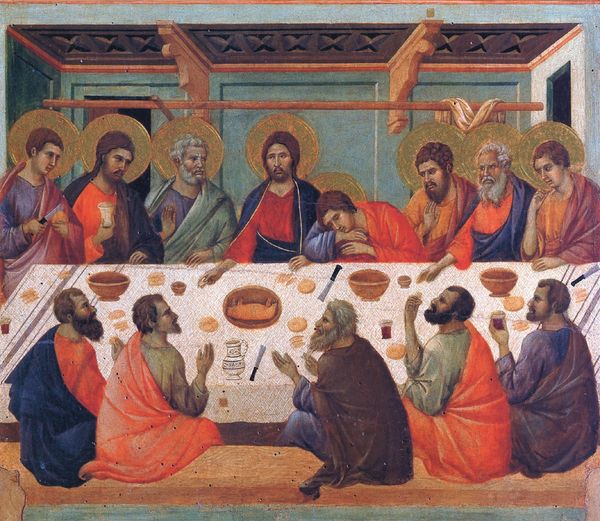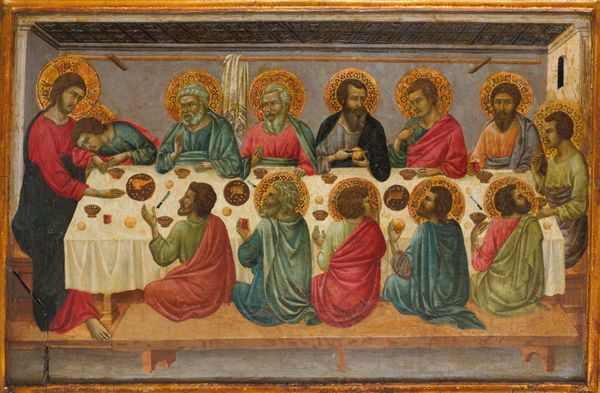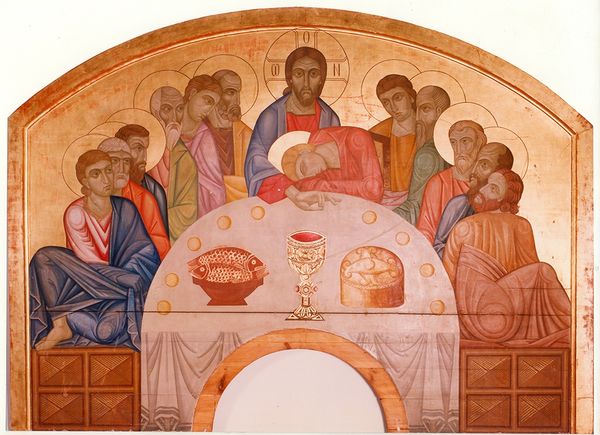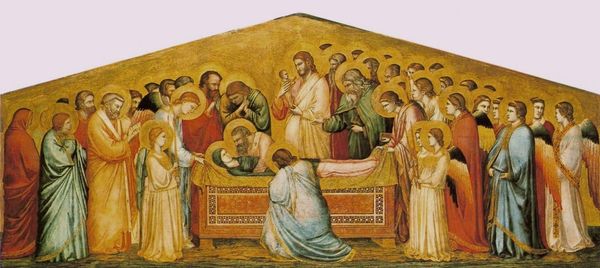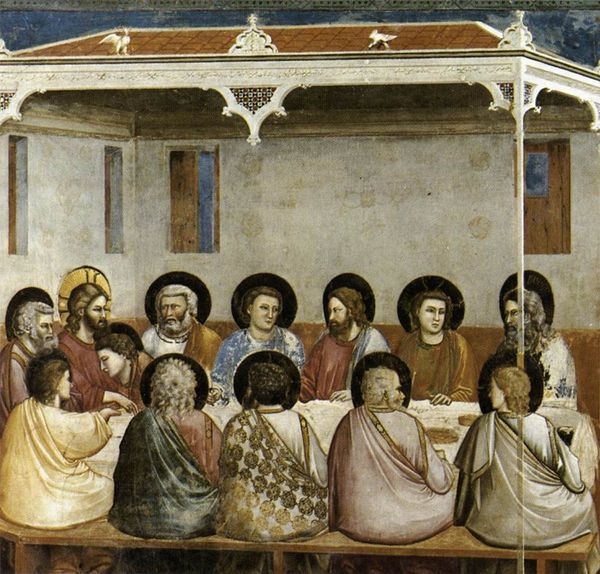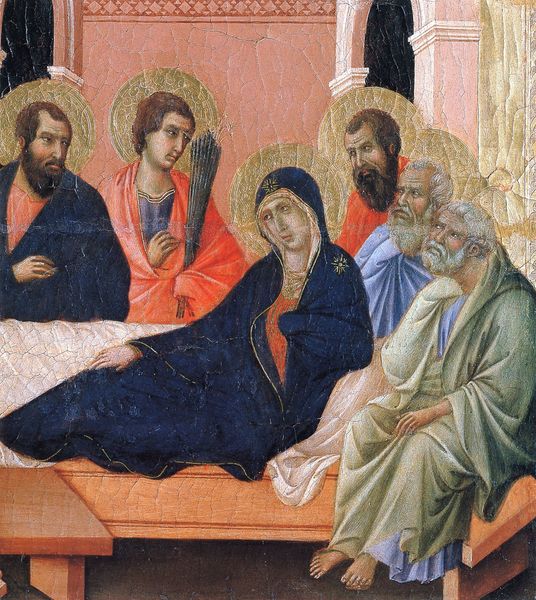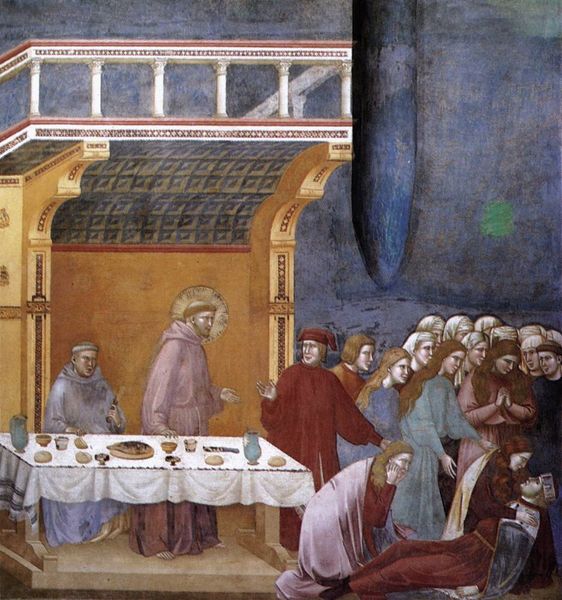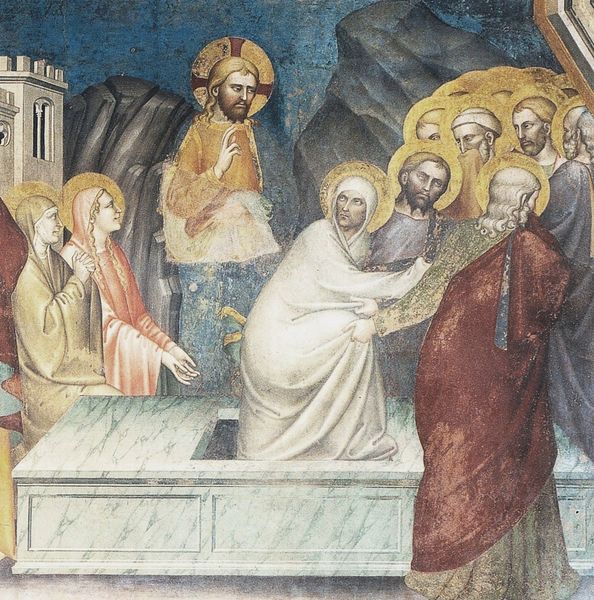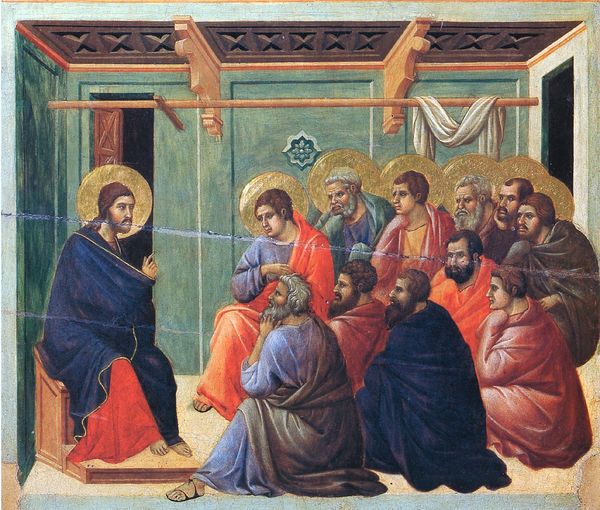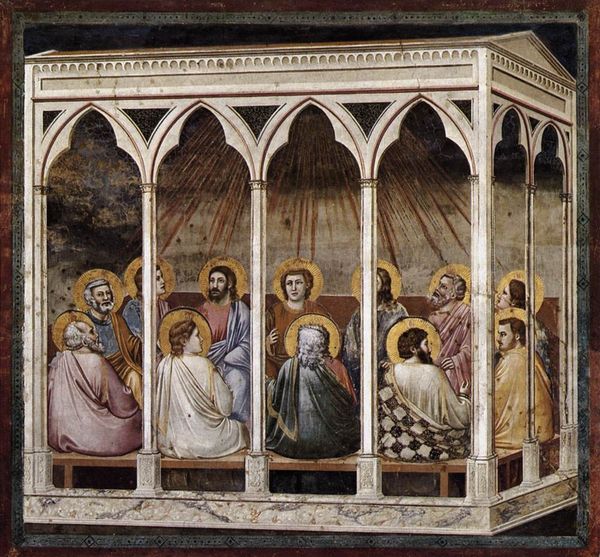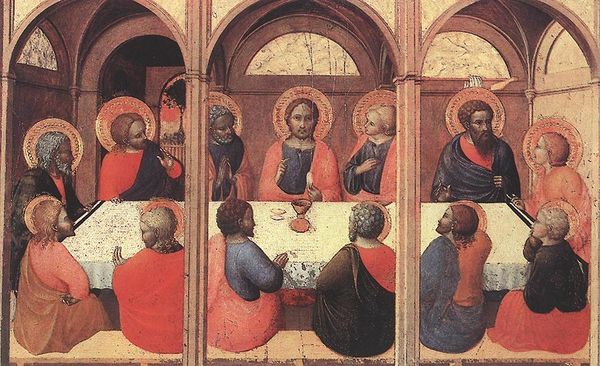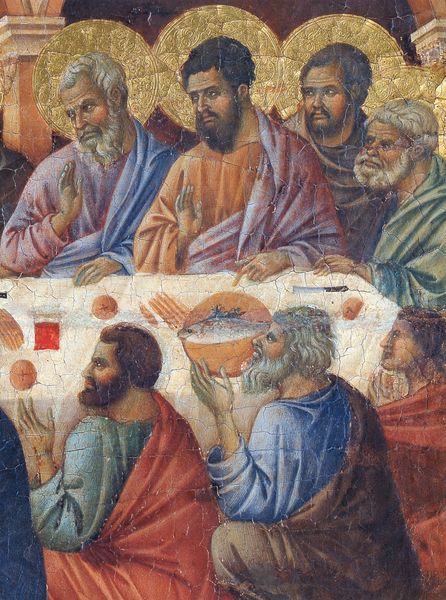
fresco
#
narrative-art
#
figuration
#
fresco
#
traditional architecture
#
oil painting
#
group-portraits
#
christianity
#
history-painting
#
italian-renaissance
#
early-renaissance
#
christ
Copyright: Public domain
Editor: Here we have Fra Angelico’s "Institution of the Eucharist," a fresco dating back to 1442. It's found in the Basilica di San Marco in Florence. It strikes me as so peaceful, almost serene, despite the gravity of the subject matter. What do you see in this piece, Professor? Curator: Peace, yes, a holy hush. For me, it’s a meditation on faith, the communal sharing of belief made visible. But more than that, it's a quiet revolution! Forget the ornate gothic drama, Fra Angelico gives us humanist clarity. See how the architecture embraces the figures, how light orchestrates the divine act? And look at the colors—they whisper, don’t they? Are you picking up on that subtle pink hue? Editor: I am! There’s a softness that feels almost otherworldly. But what about its historical context? The Early Renaissance… what were the artistic influences at play? Curator: Think Giotto's solidity mixed with a renewed interest in classical form, tempered by a deeply devotional spirit. Fra Angelico paints not just with color but with prayer, so the space isn't just rendered—it is sanctified, isn’t it? I almost expect the air in here to smell of incense. It’s meant to be less a depiction and more an invitation. Doesn’t it draw you in? Editor: It definitely does. It’s less a depiction of a past event and more of an invitation into the present moment of communion, I suppose. Thank you, this was incredibly insightful. Curator: And thank you! That gentle reading brought it alive for me again, this time tinged with the rosy hue of collaborative reflection!
Comments
No comments
Be the first to comment and join the conversation on the ultimate creative platform.
